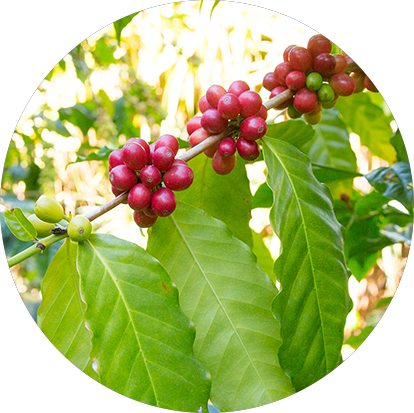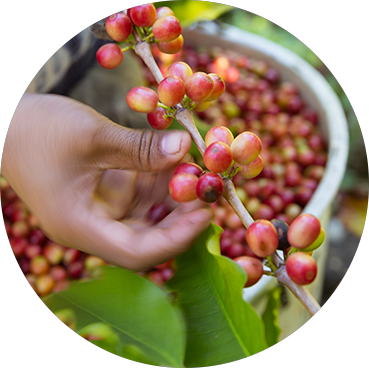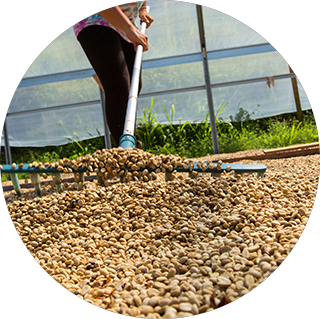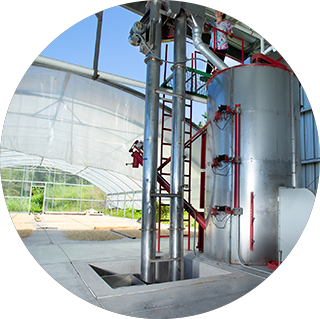Coffee Production Process
1. Pruning
The season begins between January and February with pruning the trees. Pruning is the act of cutting old branches from the tree to cycle new young branches to produce coffee. Typically,when pruning the minimum number of branches to leave is three. These three branches will hopefully be one year apart in age; this causes the oldest branch to produce the bulk of the coffee for a tree that year. The next year this branch will be cut.
Another method of pruning is called the Beaumont-Fukunaga.This method cuts an entire row (alternating every year) every three rows. Both ways keep a farm looking clean and easy to move in and helps keep trees healthy.


2. Clipping
A few months after the pruning is complete-usually April to June-the trees will have plenty of new branches sprouting along the trunks and branches. This is the time to do the clipping.
When these sprouts become more than a few inches, the majority of them should be cut off. When clipping, a few sprouts should be kept to become the future producing branches. This is arguably the most important decision for a coffees production and health since these branches will stay for three years.
3. Picking
Around September to December (this can change a little every season), the trees produce their their beans, and they are turning red. This means it is time to pick the coffee. On average there will be three or four pickings a year; this is done to pick the coffee at the perfect time when they are red not brown or green. This can play a vital role in the taste of the coffee. The picking can be done by anyone, but is time consuming and better done in a large group to finish while the cherries are ripe. The beans are put into burlap sacks and transported to the processing area.


4. Pulping
Pulping Ideally a few hours, usually the same day, after the cherries have been picked they begin the processing. The first step is to pulp the cherries. There are a few variations on the pulping machine, but the idea is the same. Pulping squeezes the cherries untill the bean pops out of its skin. The beans are now ready for step 5.
5. Fermentation
Out of the pulping machine the beans are covered in a sticky coating. This must be rinsed/cleaned off the beans. There are two ways of doing this. The traditional way is to soak the beans in water for 10-15 hours (overnight) and then rinse the beans of the sticky coating; this may also affect the flavor. The other way is more modern using a machine called a demucilager that acts as a large washing machine for the beans; it is much quicker. Farmers do either way depending on their preference.


6. Drying
Once the beans have been rinsed they must dry. A machine can be used to do this in 10-15 hours. However the majority of farmers use a platform to lay out the beans and let them dry from the wind and sun. This can take a few weeks. The ideal moisture level of the beans is 11%. At this level it can be stored for up to two years.
7. Hulling
After the drying has been completed, and once it is ready to be roasted, the beans should be hulled. This process removes the thin layer that covers the beans called the parchment. This helps to avoid a burnt taste in the coffee roast.


8. Roasting
The final step is to roast the coffee. The green beans are put into an oven type machine, and a roaster keeps on eye on everything the coffee is doing to get a perfect roast. After this the coffee is ready to be consumed or shipped!
We are certified USDA Certified Organic, we do not use chemicals or pesticides. We do this to ensure our farm, island, and the planet are kept healthy, and we produce the best possible Estate Kona Coffee quality. You can buy our coffee : https://halatreecoffee.com/shop-all/
